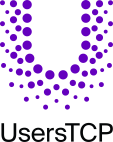GO-P2P Subtask 5 – Peer-to-Peer Trading and Energy Community in the Electricity Market
The threat of climate change, significant growth in the number of prosumers and local energy generation, and the development of new technologies enabling new business models are all contributing
Fit to Serve? The story about energy service supporting business models and systems
Thanks to the Paris agreements, Al Gore, Greta Thunberg, and the relentless flow of numbers and figures that provide proof of global warming, the sense of urgency to reduce energy consumption and stimulate the use of renewable energy has increased enormously over the past years.
Policy Brief – Improving demand-side energy policy outcomes using behavioural insights
The Energy Sector Behavioural Insights Platform of the UsersTCP brings together government policy makers and other experts to share knowledge and experiences applying behavioural insights (BIs) to energy policy.
Behavioural insights for demand-side energy policy and programmes: An environment scan
The report discusses the behavioural factors acting as barriers to energy saving behaviours, to the uptake of energy efficient, clean energy technologies and of sustainable mobility options.
2019 Annual Report
2019 was a turning point for our TCP. After a fundamental review in 2018 we collectively recognised both the strength of our 25 year history in Demand Side Management and the need to reinterpret and reinvigorate this in the light of the fundamental challenges posed by the energy transition.
Subtask 2 – HTR Characterisation
The purpose of this document is to outline a preliminary framework for characterising “Hard-to-Reach” (HTR) energy users targeted for energy efficiency (EE) and demand response (DR) programmes in the U.S. and Canada.
Subtask 2 – Who are Hard-to-Reach energy users? Segments, barriers and approaches to engage them
Energy efficiency (EE) program administrators and policy makers have long encouraged the adoption of efficient technologies and conservation practices across all energy users and sectors. Energy users who haven’t yet participated in efficiency and conservation programs despite ongoing outreach are often referred to as “Hard-to-Reach” (HTR).
Subtask 1 – How to reach the hard-to-reach?
Do you work with energy users that are hard to reach? Who do you think of first when you hear the term hard-to-reach (HTR) energy users? Vulnerable users in the residential sector or energy users that are geographically remote or maybe ones that are hard to motivate or engage?

